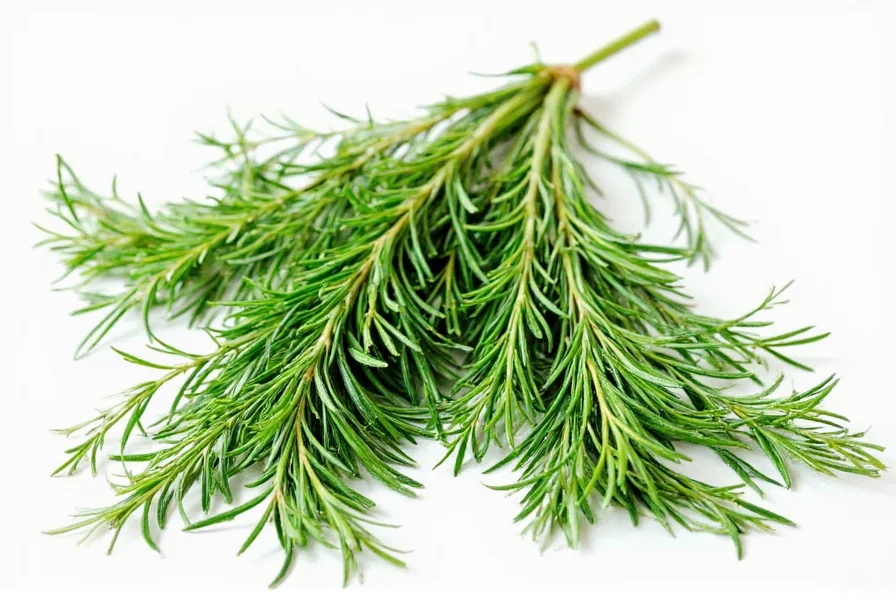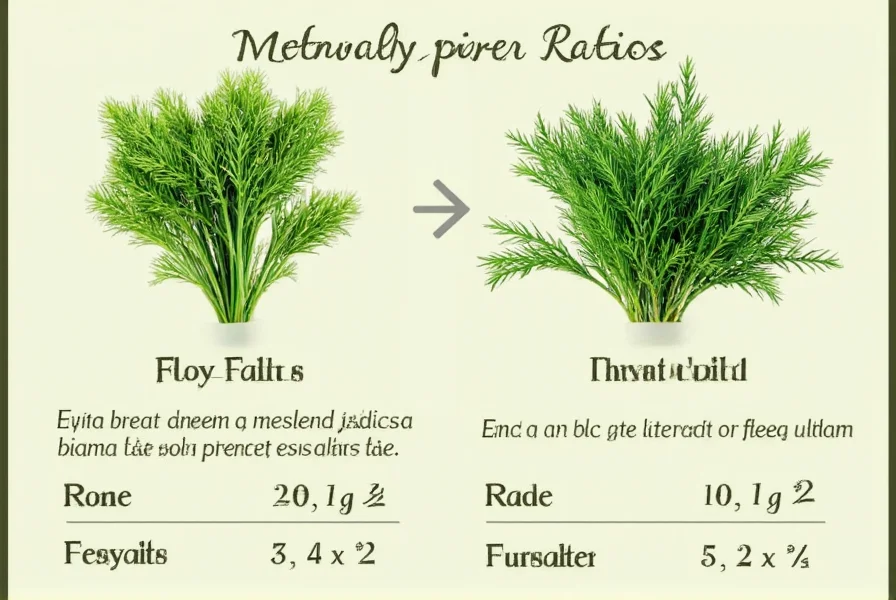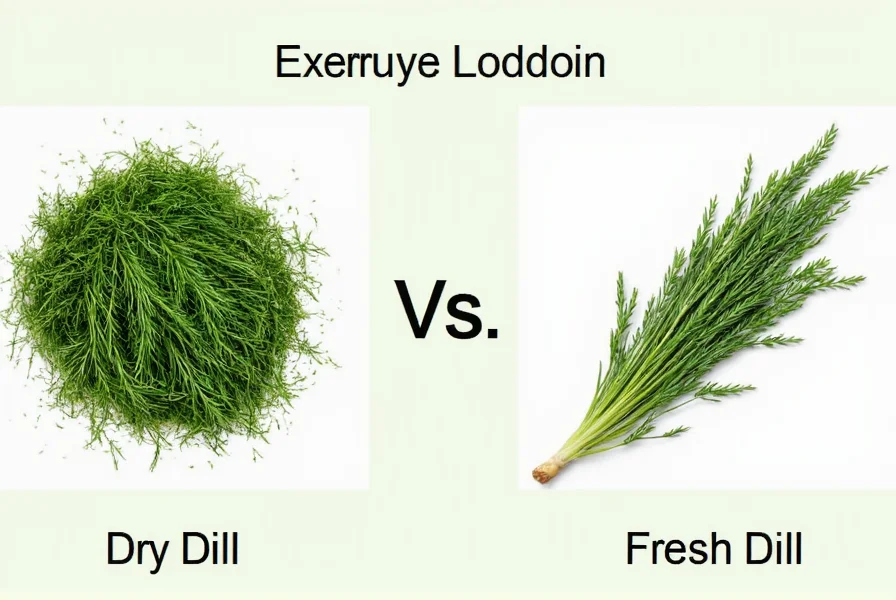Understanding herb conversions is essential for consistent cooking results. When a recipe calls for fresh dill but you only have dried dill (or vice versa), knowing the precise substitution ratio prevents flavor imbalances in your dishes. This guide provides accurate measurements, practical conversion charts, and professional tips for using both forms of this versatile herb.
Why Dried and Fresh Dill Have Different Potencies
Fresh dill contains approximately 85-90% water, while dried dill has most moisture removed. This concentration process intensifies the flavor compounds, making dried dill significantly more potent by volume. The essential oils that give dill its distinctive taste become more concentrated as water evaporates during drying.
Professional chefs and food scientists confirm that the standard 3:1 ratio (fresh to dried) applies to most herbs, including dill. However, several factors can affect this conversion:
- Age and storage conditions of dried dill
- Specific dill variety used
- Recipe type and cooking method
- Personal taste preferences
Dry Dill to Fresh Dill Conversion Chart
| Fresh Dill | Dried Dill | Best For |
|---|---|---|
| 3 teaspoons (1 tablespoon) | 1 teaspoon | Standard substitution|
| 2 tablespoons | 2 teaspoons | Salad dressings, dips|
| ¼ cup | 1¼ tablespoons | Pickling recipes|
| ½ cup | 2½ tablespoons | Fish dishes, soups|
| 1 cup | ⅓ cup | Large batch cooking

Adjusting the Standard Conversion Ratio
While the 3:1 ratio serves as a reliable starting point for how much dried dill equals fresh dill, certain situations require adjustments:
When to Use Less Dried Dill
- If your dried dill is very fresh (less than 6 months old)
- For delicate dishes like fish or egg salads
- When using high-quality, properly stored dried dill
- In cold preparations where flavors don't mellow during cooking
When to Use More Dried Dill
- If your dried dill has been stored longer than a year
- For robust dishes like stews or hearty soups
- When the dried dill appears faded or has lost aroma
- In recipes with many competing flavors
Practical Substitution Tips
Understanding the dry dill to fresh dill conversion ratio is just the beginning. These professional tips ensure perfect results:
- Add dried dill early: Incorporate dried dill at the beginning of cooking to allow time for rehydration and flavor development
- Add fresh dill late: Stir fresh dill into dishes during the last 5-10 minutes of cooking to preserve its delicate flavor
- Crush dried dill: Rub dried dill between your fingers before adding to release essential oils
- Taste as you go: Always adjust seasoning after the conversion and allow flavors to meld
- Consider the dish type: For pickling recipes, many experts recommend using 25% more dried dill than the standard conversion
Storage Guidelines for Maximum Potency
Proper storage affects the dried dill measurement equivalent to fresh over time:
Fresh dill: Store upright in a glass with water (like flowers), covered loosely with a plastic bag in the refrigerator. Use within 5-7 days for optimal flavor. Dill loses approximately 10% of its flavor compounds each day when refrigerated.
Dried dill: Keep in an airtight container away from light, heat, and moisture. Properly stored, dried dill maintains good flavor for 1-2 years, though peak potency occurs within the first 6 months. After one year, you may need to increase the amount by 25-50% to achieve equivalent flavor.

Common Substitution Mistakes to Avoid
Many home cooks make these errors when substituting dried dill for fresh in recipes:
- Using equal measurements (1:1 ratio) resulting in overpowering flavor
- Adding dried dill at the same stage as fresh dill would be added
- Not accounting for the age of dried herbs
- Using the conversion ratio for dill weed with dill seed (which has different potency)
- Measuring dried dill without breaking up clumps, leading to inconsistent amounts
Remember that dill seed has a completely different flavor profile and potency than dill weed (the leafy part), so the standard conversion ratio doesn't apply. Dill seed is significantly stronger and should be used in much smaller quantities.
Recipe-Specific Conversion Guidance
The ideal fresh dill to dried dill conversion chart varies slightly by application:
- Pickling: Use 25% more dried dill than the standard ratio (1 tbsp fresh = 1¼ tsp dried)
- Fish dishes: Stick strictly to 3:1 ratio to avoid overpowering delicate flavors
- Dips and dressings: Use 10-15% less dried dill as flavors concentrate when chilled
- Soups and stews: Use standard ratio but add dried dill 15-20 minutes before serving
- Baked goods: Reduce dried dill by 25% as heat intensifies herbal flavors
When converting recipes that call for dill weed, remember that dill seed requires a completely different conversion approach. For most applications, 1 teaspoon of dill seed equals the flavor of 2 tablespoons of fresh dill weed.
Testing Your Conversion
The most reliable method for perfect dill weed conversion fresh to dried is the taste test:
- Prepare your recipe using the standard conversion ratio
- Cook for 75% of the total time
- Carefully taste and evaluate the dill flavor
- Add additional dried dill in ⅛ teaspoon increments if needed
- Allow flavors to meld for at least 5 minutes before retesting
This approach works particularly well for soups, stews, and sauces where flavors develop over time. For cold applications like salads or dips, you'll need to be more precise with your initial measurement since you can't easily adjust after preparation.
FAQ: Dry Dill and Fresh Dill Conversions
What is the exact conversion for 2 tablespoons of fresh dill to dried dill?
Two tablespoons of fresh dill equals 2 teaspoons of dried dill. This follows the standard 3:1 conversion ratio where fresh dill measurements are three times the amount of dried dill.
Can I use the same conversion ratio for dill seed as for dill weed?
No, dill seed has a completely different flavor profile and potency. One teaspoon of dill seed equals approximately 2 tablespoons of fresh dill weed. Dill seed is significantly stronger and has a different flavor than dill weed (the leafy part), so the standard fresh-to-dried conversion ratio doesn't apply.
How do I adjust the conversion if my dried dill is older than one year?
If your dried dill is older than one year, increase the amount by 25-50% beyond the standard conversion. For example, where you'd normally use 1 teaspoon of dried dill to replace 1 tablespoon of fresh, use 1¼ to 1½ teaspoons instead. Older dried herbs lose potency over time due to essential oil evaporation.
Why does the conversion ratio differ for pickling recipes?
Pickling requires a stronger dill flavor that can withstand the vinegar and maintain presence through the preservation process. For pickling, use 25% more dried dill than the standard ratio (1 tablespoon fresh dill = 1¼ teaspoons dried dill). The acidic environment and extended storage time diminish herbal flavors, necessitating this adjustment.
Does freezing fresh dill affect the conversion ratio when substituting for dried dill?
Yes, frozen fresh dill has slightly less potency than fresh but more than dried. When substituting frozen dill for dried, use a 2:1 ratio instead of the standard 3:1. For example, 2 teaspoons of frozen dill equals 1 teaspoon of dried dill. The freezing process breaks down cell walls, making flavors more accessible than in dried form but less concentrated than in fresh.











 浙公网安备
33010002000092号
浙公网安备
33010002000092号 浙B2-20120091-4
浙B2-20120091-4